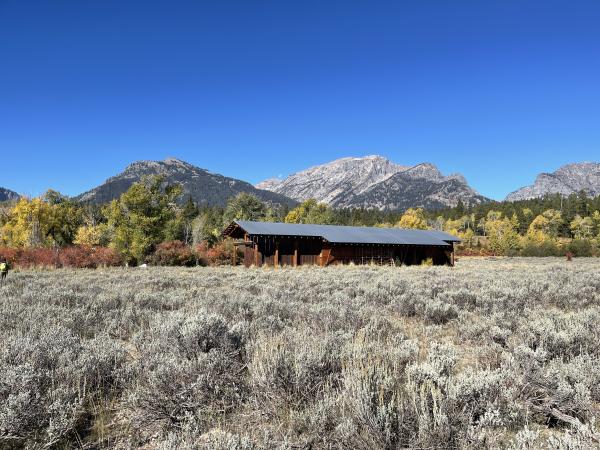Reimagining the Interiority of Our National Parks with Lysa Janssen’s Advanced Studio

This semester, students in Lysa Janssen’s Advanced Interior Design studio “ID Rocks!” are considering the relationships between interiors and exterior spaces, as well as organic and inorganic spatial features, through the lens of our nation’s national park system.
Home to some of the most majestic geological wonders and natural phenomena, the United States’ national parks are also the country’s most impressive rock collections. In addition to preserving our geologic heritage, they are home to structures like Yellowstone’s Old Faithful Inn, Grand Canyon’s El Tovar Hotel, and Yosemite’s Ahwahnee, which serve as iconic backdrops for educational activities, family vacations, and memory-making. Built predominately of wood and stone, the interiors of these Parkitectures often reflect rustic styles that speak to their natural surroundings and regional, even nostalgic, visions of American history and décor.
Layered into this investigation of the history of our national parks and their interior spaces, “ID Rocks!” is also studying the basic properties of igneous, sedimentary, and metamorphic rock formations, processes such as plate tectonics and mineralization, and the geological wonders specific to the Grand Tetons and Yellowstone. Using the earth’s materials as inspiration, students are tasked with reimagining the interior qualities of these “park architectures,” as well as the buildings’ connection to the landscape.
To support this exploration, Janssen’s studio traveled to Jackson Hole, Wyoming this September to experience, first-hand, some of these iconic structures and natural wonders in both Grand Teton and Yellowstone National Parks. There, they toured their specific site of investigation this semester, the Laurance S. Rockefeller Preserve Center in the Grand Tetons, with John Carney and his team at Prospect Studio in Jackson Hole. In addition to the Preserve Center, students hiked the trails around the Tetons’ Phelp’s Lake, where they visited cabins that were originally part of a dude ranch located on the site during the early 1900s. Students reimagined the interiors of these cabins for their first project this semester, which were owned by the Rockefeller family before the family donated them to the Grand Teton National Park in 2007. As part of their final project, students will use the existing Laurence S. Rockefeller Preserve Center site and building as their base to showcase the geological story and physical rock and mineral specimens of the Grand Teton and Yellowstone National Park areas.
As part of their visit, students also spent a day exploring Yellowstone National Park. There, they toured one of the oldest and most iconic examples of “parkitecture” in the country, Yellowstone’s Old Faithful Inn, with national park author Ruth Quinn. They also witnessed and sought inspiration from many of the area’s geological wonders including Yellowstone’s Prismatic Spring and the Grand Canyon of the Yellowstone.
“We feel good being in nature, and it was important for the students to experience the palpable beauty of one of America’s most iconic landscapes, geological wonders, and the distinct culture of the Rocky Mountains first-hand,” studio instructor Lysa Janssen said. “Using the natural world as our guide, we’ve been exploring how interiors can reflect site and environment, and how geology can inspire curiosity, sensorial experiences, experimentation in form, materials, color, and pattern, and new design methodologies.”

